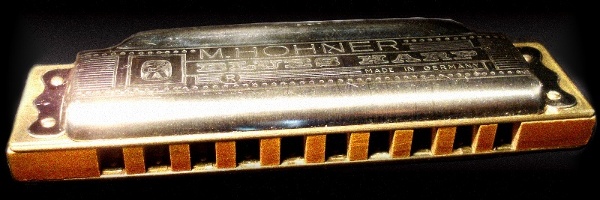To play in Second Position or Cross Harp
The 2 draw hole would be the root note. So for example, if you have a C harp, you would now be playing in the key of G (2 draw = G).
Oh When The Saints (in 2nd position)
So for example, since you now know the tune in first position, right?! Lets try to play it in second position, here’s the tab for the first few lines:

You’ll notice that when we get to the second line ‘oh when the saints go marching in’, the ‘in’ is a bent note. So now you can play in first and second position, just need to get those bends sorted!



Hello, with “oh when the saint” in 1st and second position I understand how to play something in 1st po and translate in 2nd. But when say I play in D with harp G in third position, how do you know that you play in 3rd without having the corresponding tab either in 1st or 2nd (to be tranlated in 3rd)?
Sorry but for me 2nd and other position are hard to understand/practice.
Thanks a lot
Bernard/ Belgium
Hi Bernard,
Everytime you change position, you’ll be playing in a different key – see the ‘Keys & Positions’ for more details. The ‘oh when the saints’ melody is based on a major scale (and its key is the same as the start note, the 1st note of the major scale) and so you can play in 1st position without any bends, in 2nd position you’ll need a 3 bend (tone), and in 3rd position you’d need a 2 bend (semitone) and 3 bend (tone).
Don’t get bogged down by tab, just imagine the melody in the key that you’re aiming for, then try and play it – that’s the best way to learn.
Brilliant explanations and examples, very clearly written, thank you very much, also how much are Skype lessons please just for future reference. Also I love the wobble effect how is this achieved please? Thanks Terri
Hi Terri, thanks for the feedback. It’s £20/hr for Skype lessons. I think the wobble effect you mean is the tongue quickly bending and releasing on a draw.